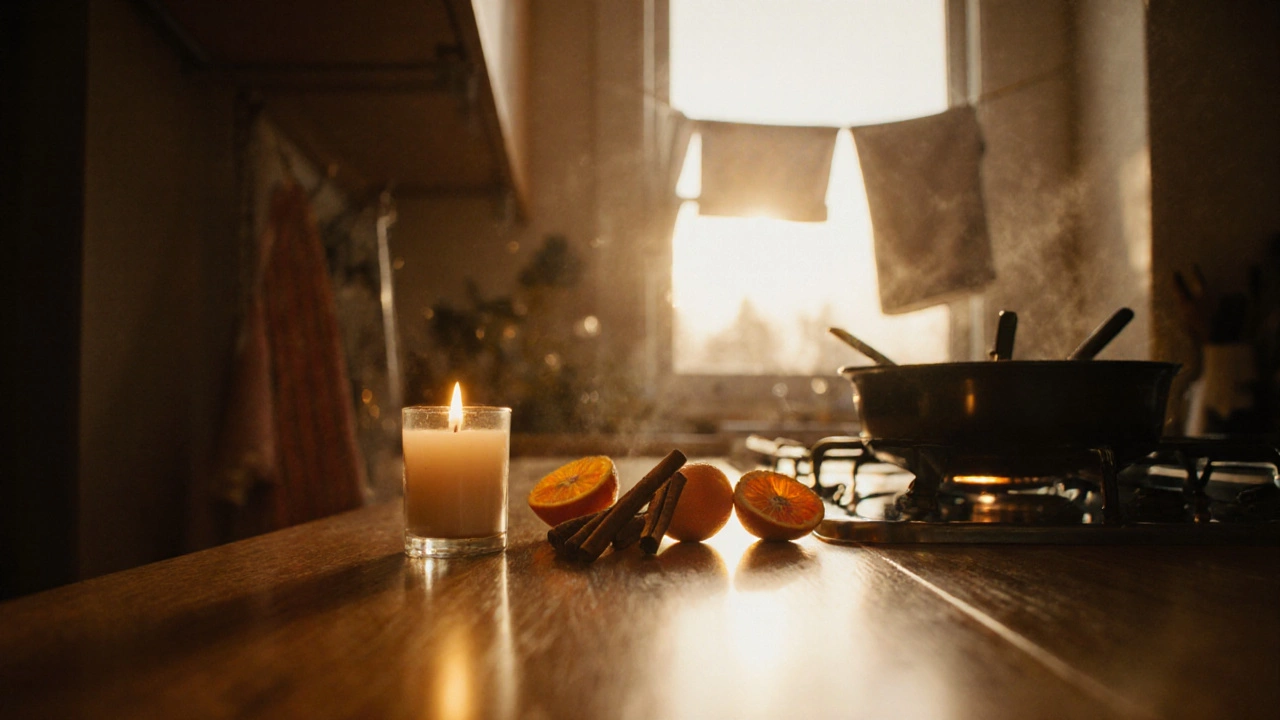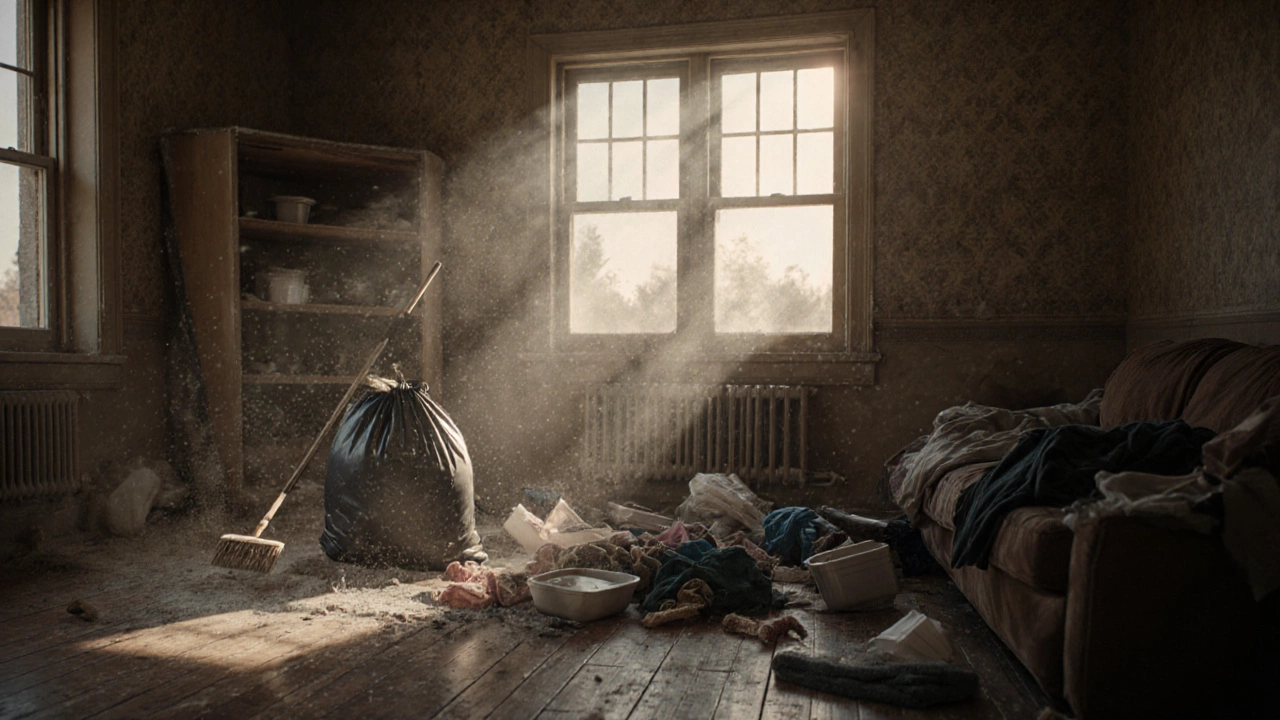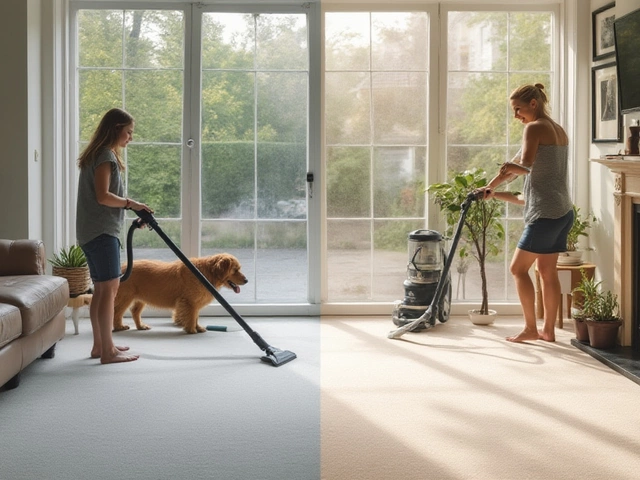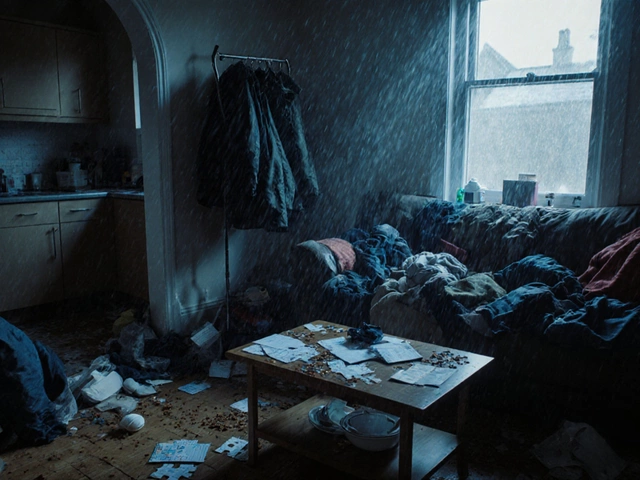Deep Cleaning Time Estimator
How Long Will Your Deep Clean Take?
Get a realistic time estimate based on your house size and condition. This tool follows the article's principles: focus on high-impact areas first and skip what doesn't matter.
Your House Details
Your Time Estimate
Time breakdown:
Trash removal
Kitchen & bathroom
Floors & surfaces
Priority Tasks
"Start with the air, not the floors. Open every window."
"Get rid of 80% of the trash in the first hour. That's half the battle won."
"These two rooms are the biggest sources of germs and odor."
What to Skip
Save time on these tasks - they're not worth your energy right now:
- Polishing wood floors
- Removing stains from carpets
- Cleaning inside fridge freezer compartment
- Organizing drawers
"You won't get to the baseboards. You won't scrub the oven. And that's okay. This isn't a magazine photoshoot."
Imagine walking into a house where the floors haven’t been swept in months, dishes are piled up to the sink’s edge, and dust has settled into every corner like a second skin. This isn’t a movie set-it’s real life. Maybe it’s been months since anyone lived there. Maybe you’ve been overwhelmed, working two jobs, caring for someone sick, or just lost your way. Whatever the reason, a neglected house doesn’t have to stay that way. You don’t need a team, a magic potion, or three days off. You can turn it around in a single day if you know where to start-and what to skip.
Start with the air, not the floors
Before you grab a mop or a vacuum, open every window. Even in Brisbane’s November heat, fresh air is your first cleaning tool. Open windows and doors to let stale air out. Turn on exhaust fans in the kitchen and bathroom. If you have an air purifier, run it on high. Dust, mold spores, and pet dander don’t vanish when you scrub-they float. You’re not cleaning the house; you’re cleaning the air inside it. Without this step, you’ll just be stirring up dirt and breathing it back in.Trash first, everything else later
Grab a stack of heavy-duty garbage bags. Not the flimsy ones. Go for the thick, 50-liter contractor bags. Start in the kitchen. Pick up every plate, cup, or container that’s been sitting there for days. Don’t wash them yet. Just toss them into the bag. Same with food wrappers, takeout containers, expired milk cartons, and anything moldy. Move to the living room-old newspapers, broken toys, empty bottles. Bedroom? Stacks of clothes on the floor? Don’t sort them. Just throw them into the bag. You’re not organizing. You’re removing clutter that’s rotting, stinking, or attracting bugs. Get rid of 80% of the trash in the first hour. That’s half the battle won.Work top to bottom, room by room
Clean from the ceiling down. Dust on the ceiling fans, light fixtures, and window sills. Use a dry microfiber duster or an old pillowcase pulled over a broom handle. Then move to walls. Wipe smudges near light switches and door handles with a damp cloth and a splash of white vinegar. Next, tackle furniture. Wipe down tables, shelves, and countertops with a solution of warm water and a teaspoon of dish soap. Don’t clean the whole room at once. Do one surface at a time. Ceiling → walls → furniture → floor. Repeat in each room. This prevents you from walking through clean areas and re-soiling them.Focus on the kitchen and bathroom first
These two rooms are the biggest sources of germs and odor. Start with the kitchen sink. Pour boiling water down the drain to clear grease. Then scrub the sink basin with baking soda and vinegar. Let it fizz for 10 minutes. Scrub with a stiff brush. Wipe down the fridge interior with a cloth soaked in warm water and a few drops of tea tree oil-it kills mold and smells clean. Clean the microwave by heating a bowl of water with lemon slices for 3 minutes. The steam will loosen gunk. Wipe it out with a rag. For the bathroom, tackle the toilet first. Pour a cup of white vinegar into the bowl and let it sit while you clean the shower. Spray the shower walls and tiles with undiluted white vinegar. Let it sit for 15 minutes. Scrub with a brush. Don’t use bleach unless you have no other option-it’s harsh and smells awful. Rinse with water. Wipe the mirror with newspaper (yes, newspaper) and vinegar. It leaves zero streaks.
Floors: sweep, then mop, then dry
Don’t mop before sweeping. You’ll just smear dirt into the grout. Sweep every floor with a stiff broom, starting from the farthest corner and working toward the exit. Pay attention to corners, under furniture, and along baseboards. Use a vacuum with a brush attachment if you have hardwood or laminate. Then mop. Use warm water and half a cup of white vinegar per bucket. No commercial cleaners needed. They leave residue that attracts more dirt. Mop in small sections. Dry each section immediately with a clean towel or microfiber cloth. Wet floors are slippery and slow to dry. You don’t want to be sliding around in your own cleanup.Laundry: wash what you can, toss what you can’t
Piles of clothes on the floor? Don’t try to fold them. Don’t sort by color. Just grab everything-bed sheets, towels, shirts, socks-and toss it into the washing machine. Use hot water and a cup of vinegar in the rinse cycle. Vinegar kills bacteria and softens fabrics without chemicals. If something smells like mildew or has visible stains, throw it out. You’re not saving memories. You’re saving your health. Wash one load at a time. Hang towels and sheets to dry outside if you can. Sunlight is the best natural disinfectant.Don’t clean everything. Clean what matters.
You won’t get to the baseboards. You won’t scrub the oven. You won’t polish the brass doorknobs. And that’s okay. This isn’t a magazine photoshoot. This is a house that’s been abandoned. Your goal isn’t perfection. It’s livability. If you can walk without stepping on something, if you can open a drawer without it falling out, if you can sit on the couch without coughing, you’ve won. Leave the deep scrubbing of grout, oven interiors, and window tracks for another day. Focus on making the space safe and breathable.
What to skip (and why)
- Polishing wood floors: You don’t have time. A quick sweep and mop will do. Save the polish for when the house feels like home again. - Removing stains from carpets: Vacuum thoroughly. If stains remain, cover them with a towel until you can call a pro. Don’t scrub with random cleaners-they can set the stain. - Cleaning inside the fridge’s freezer compartment: Defrosting takes hours. Just remove the food, wipe the shelves, and leave the ice. You’ll deal with it later. - Organizing drawers: If a drawer is full of junk, empty it into a box. Label it “To Sort Later.” Don’t waste energy deciding what to keep. Just get it out of sight.Final touch: make it smell like a home, not a disaster
Light a candle. Open a window. Boil a pot of water with orange peels and cinnamon sticks. Or just spray a mix of water and 10 drops of lavender oil around the room. Smell is the strongest memory trigger. If it smells clean, your brain will believe the house is clean-even if you didn’t get every speck of dust.What to do tomorrow
Tomorrow, don’t go back to chaos. Spend 20 minutes a day doing one small thing: wipe the kitchen counter before bed, pick up one pile of clothes, empty the trash. That’s it. You don’t need to be perfect. You just need to be consistent. One day, you’ll look around and realize you didn’t even think about cleaning. Because the house feels normal again.Can I deep clean a neglected house in one day?
Yes, you can. You won’t get it spotless, but you can make it safe, smellable, and walkable in 8-10 hours. Focus on removing trash, cleaning high-touch surfaces, and tackling the kitchen and bathroom. Skip the details. Livability beats perfection.
What cleaning supplies do I actually need?
You need: heavy-duty trash bags, a broom and dustpan, a vacuum with a brush attachment, microfiber cloths, white vinegar, baking soda, dish soap, a scrub brush, and rubber gloves. That’s it. You don’t need 12 different cleaners. Vinegar and baking soda handle 90% of cleaning tasks safely and cheaply.
How do I avoid getting overwhelmed?
Break the house into zones: kitchen, bathroom, living room, bedroom. Do one zone at a time. Set a timer for 45 minutes. When it goes off, take a 10-minute break. Drink water. Walk outside. Don’t think about the whole house. Just finish the next 45 minutes. Momentum builds faster than you think.
What if the house has mold or pests?
If you see black mold on walls or ceilings, or if you see ants, cockroaches, or rodents, stop. Don’t clean it yourself. Mold can be toxic. Pests need professional treatment. Call a local remediation service. Your health is more important than a clean floor. In Brisbane, companies like EcoClean Solutions or Spotless Homes offer emergency assessments.
Should I wear a mask while cleaning?
Yes, especially if the house has been empty for months. Dust and mold spores become airborne when disturbed. Wear an N95 mask or even a simple surgical mask. Protect your lungs. This isn’t optional-it’s basic safety.
How do I keep the house clean after this?
Build two habits: every night, wipe the kitchen counter. Every weekend, take out the trash and vacuum one room. That’s it. Consistency beats intensity. A clean house isn’t about big cleaning days. It’s about small, daily actions that stop mess from piling up.





